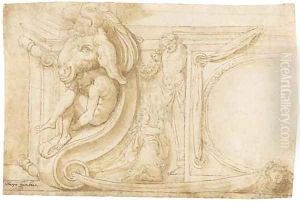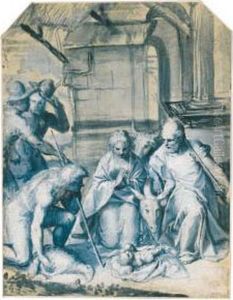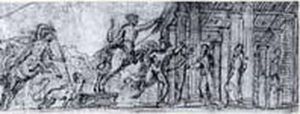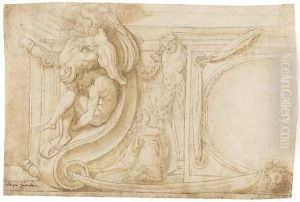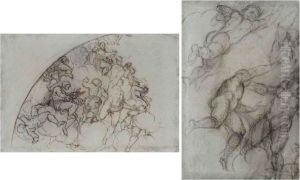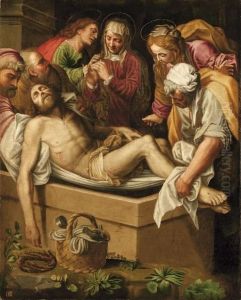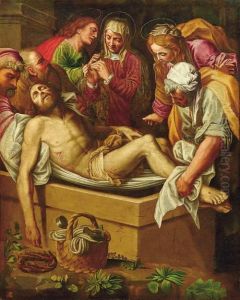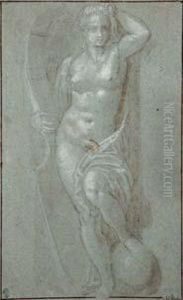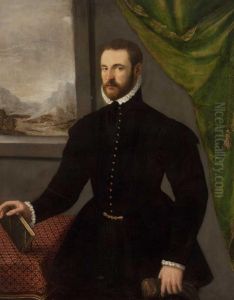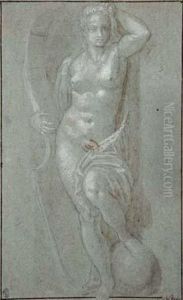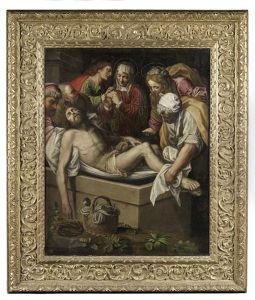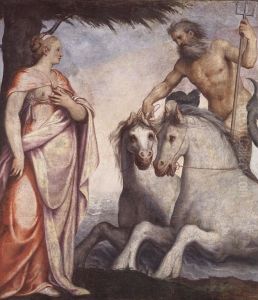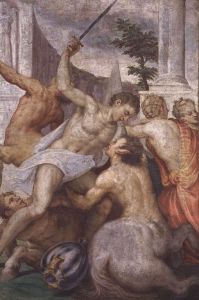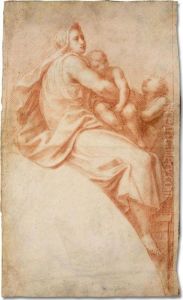Lattanzio Gambara Paintings
Lattanzio Gambara was an Italian painter active during the Renaissance period, born in Brescia in 1530 and died in Parma in 1574. His work is associated with the late Mannerist style, characterized by its artificial elegance, elongated figures, and often complex compositions. Gambara's early training is not well-documented, but it is believed that he was a pupil of Giulio Campi in Cremona, which had a significant influence on his artistic development.
Gambara's career was primarily spent in Northern Italy. He worked on a number of frescoes in various churches and buildings, which were his primary contributions to the art world. One of his most notable works is the fresco decoration of the dome and apse of Santa Maria dei Miracoli in Brescia, which showcases his command of perspective and his ability to create a sense of the divine through light and color.
Despite his talent, Lattanzio Gambara did not achieve the same level of fame as some of his contemporaries. However, his work was well-respected by those who commissioned it, and he was known for his skill in depicting narratives in a vibrant and expressive manner. His style exhibits a blend of Lombard and Roman influences, a testament to the diverse artistic environments he worked in throughout his life.
Gambara's work also includes altarpieces and panel paintings, though fewer of these have survived compared to his frescoes. His paintings are characterized by their vivid colors and dramatic lighting effects, which add a sense of emotion and vitality to his subjects. Despite his death at the relatively young age of 44, Lattanzio Gambara left behind a body of work that continues to be appreciated for its contribution to the Mannerist movement in Italian Renaissance art.
